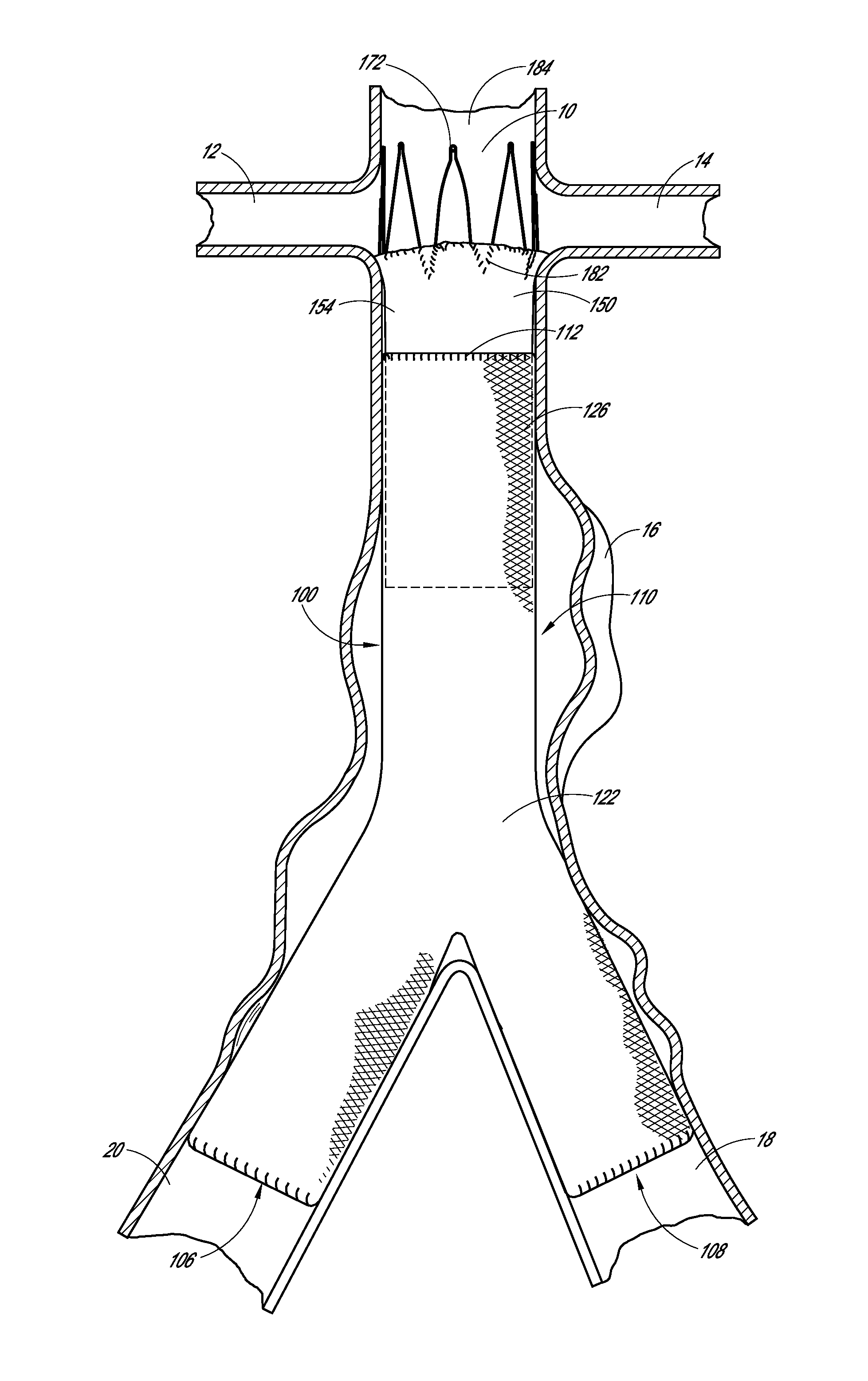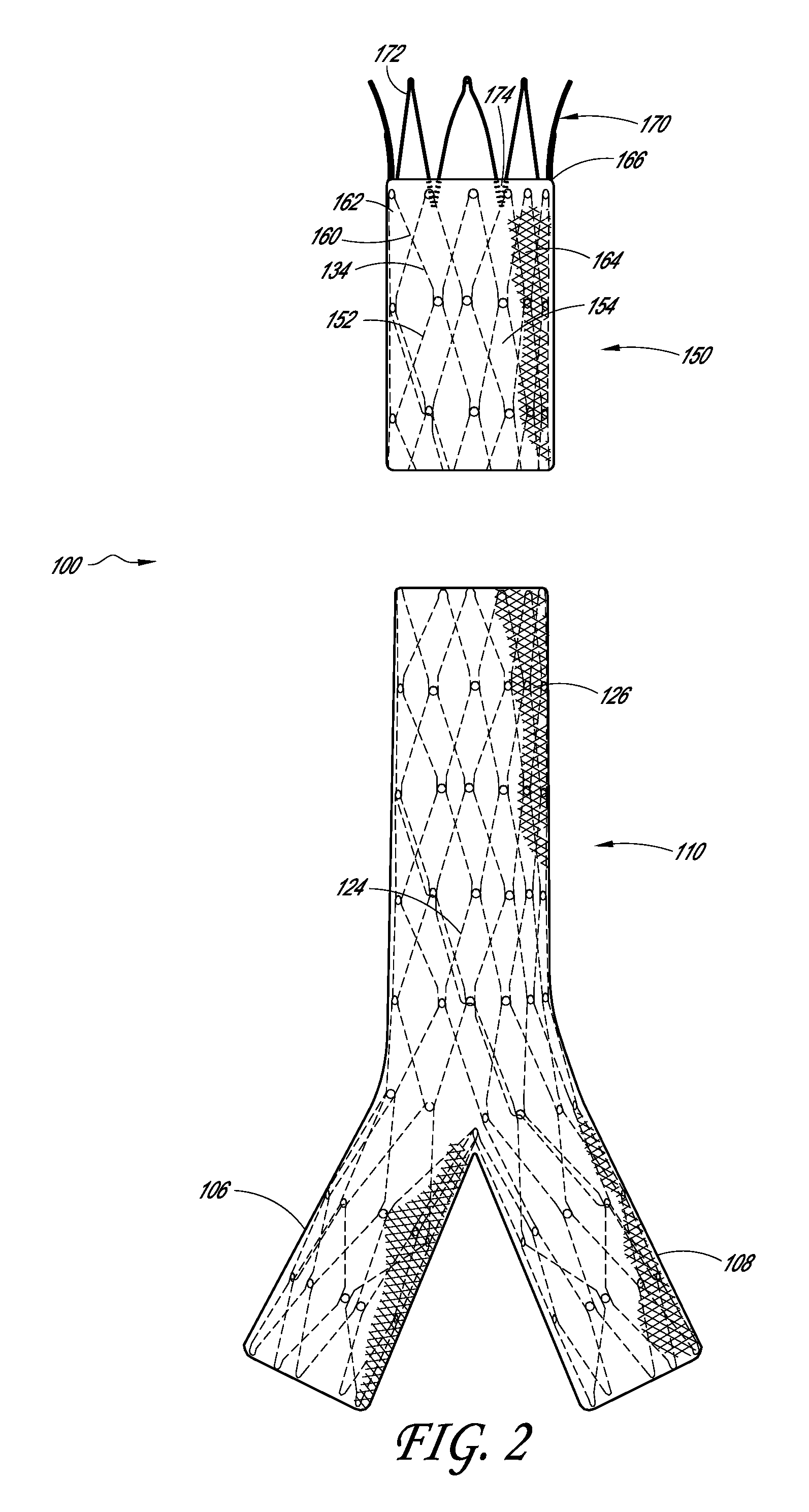Endoluminal vascular prosthesis
a vascular prosthesis and endoluminal technology, applied in the field of endoluminal vascular prosthesis, can solve the problems of high mortality, abdominal wall surgery, sac rupture, etc., and achieve the effect of high risk, and reducing the risk of surgery
- Summary
- Abstract
- Description
- Claims
- Application Information
AI Technical Summary
Benefits of technology
Problems solved by technology
Method used
Image
Examples
Embodiment Construction
[0016]Some embodiments comprise an endoluminal prosthesis that can include a first support having a proximal end and a distal end and a second support having a proximal end and a distal end. The second support can be located closer to a proximal end of the prosthesis as compared to the first support. A cover at least substantially covers the first support and at least a portion of the second support. At least a portion of each of the first and second supports can be coupled to the cover. The second support comprises distal apices that can be longitudinally and / or circumferentially offset as compared to proximal apices of the first support.
[0017]Some embodiments are directed to a method of deploying an endoluminal prosthesis in vasculature. The method includes inserting an endoluminal prosthesis within the vasculature. The endoluminal graft has a first support and a second support coupled to a sleeve. The second support can be coupled to a distal end of the sleeve and extends longitu...
PUM
 Login to View More
Login to View More Abstract
Description
Claims
Application Information
 Login to View More
Login to View More - R&D
- Intellectual Property
- Life Sciences
- Materials
- Tech Scout
- Unparalleled Data Quality
- Higher Quality Content
- 60% Fewer Hallucinations
Browse by: Latest US Patents, China's latest patents, Technical Efficacy Thesaurus, Application Domain, Technology Topic, Popular Technical Reports.
© 2025 PatSnap. All rights reserved.Legal|Privacy policy|Modern Slavery Act Transparency Statement|Sitemap|About US| Contact US: help@patsnap.com



